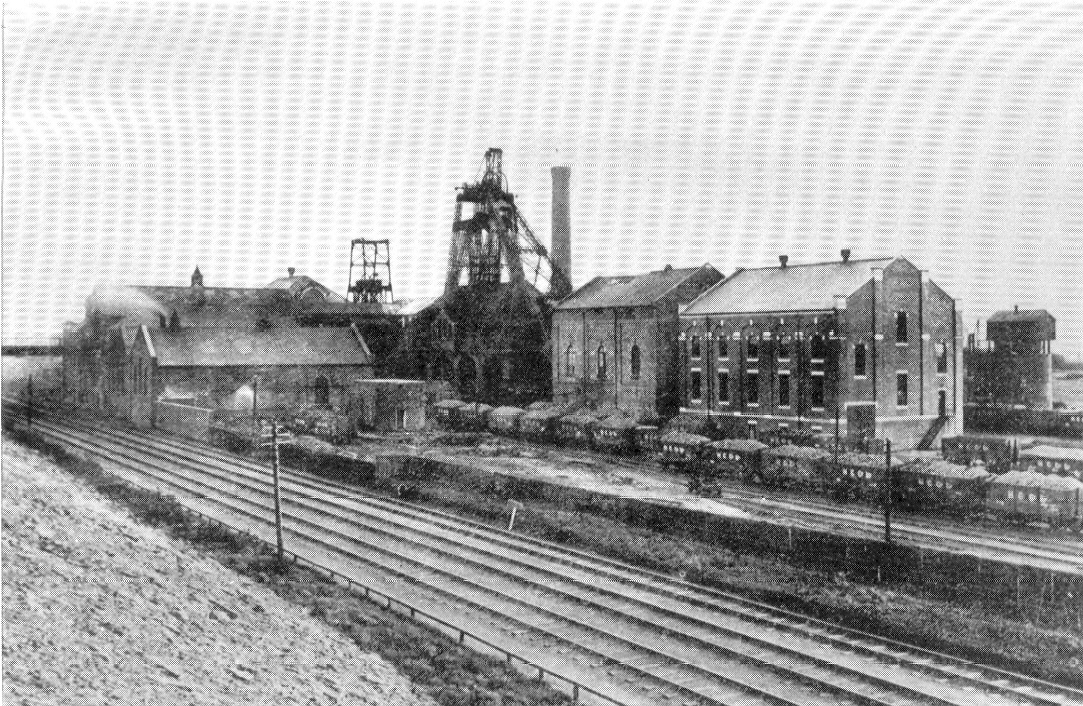|
|
 |
I was born in Boldon Colliery, then in County Durham and now in South Tyneside.
The deep mine at Boldon Colliery, after which the village was named, lasted for about a century. By the 1980s the
pit had gone and so had the railway line that used to divide the Coll'ry from Newtown. I well remember the wagons
that travelled down with iron ore going towards the staithes on the Tyne.
There is a blossoming website called The Boldons. For more information on Boldon click the link or click here.
The rest of Boldon is composed of a series of villages - Hedworth, West Boldon,
East Boldon going towards Cleadon and Whitburn and South Boldon. Basically it is an area in between Newcastle and
Sunderland. Football loyalties are fairly even split between the Magpies and the Black Cats!
Boldon Buke
Perhaps one of Boldon's claims to fame was the Boldon Buke. The northermost parts of England never
appeared in the Doomsday Survey and a separate book ("buke") was made starting with Boldon - hence the name. The original
is in the British Museum. The oldest part of the area is West Boldon on top of the hill about midway between Newcastle
and Sunderland. There were a few battles in ancient times in the area and I remember when the "new houses" were built
in the mid fifties (Hardie Drive) a few skeletons were found on the site.
The Prefabs
I used to live in Wilton Gardens - the prefabs - and then moved "up the bank" to West Boldon just off
Hardie Drive. Wilton Gardens is still there but our old prefab is long since gone. I have fond memories of hot
summers and the walls banging as they contracted during the night when it got colder - but they were well built houses.
| Boldon Colliery circa 1978 |
|
|
| the pit was demolished soon after this |
| Boldon Colliery circa 1935 |

|
| before the war and later nationalisation |
|
 |
School
I went to Hedworth Lane Infants then across the yard to the Juniors. I passed the 11+ and went
to Jarrow Grammar (now called Springfield).
University & Earlier Work
Left school and went to the local university at Newcastle-upon-Tyne. I became a Christian when
I was at university and after a couple of years at Newcastle I spent another couple of years with Washington New Town Development
Corporation learning about roads, sewers, town planning, etc.
- Despite its modern industrial appearance, Jarrow, on the south bank of
the River Tyne to the east of Gateshead is one of the most historic towns in the North East of England. Its early history
is centred around a humble Anglo-Saxon church dedicated to St Paul, which overlooks the Don, a small river that joins the
Tyne in the industrial surroundings of the mud flats called Jarrow slake. St Pauls was founded by a Northumbrian noble called Benedict Biscop, in the seventh century A.D, The dedication stone
for the church is the oldest in the country, dating the building to the 23rd April of the year 681 A.D.
- Biscop's Saxon monastery at Jarrow was a great centre of English learning
and is famed the world over as the historic home of the Venerable Bede, (673-735 A.D). Bede came to Jarrow at the age of twelve, where he was later the author of over forty scholarly works,
including the `Historia Ecclesiastica Gentis Anglorum' of A.D 731. This translates to `The History of the English Church and
People' and is a major source for the greater part of our knowledge of Anglo-Saxon England. Bede was without doubt the first
historian of England and is widely regarded as the `candle' of the period of history we call the `Dark Ages'.
The Diocese of Durham, Church of England gave me the opportunity to go to university to study theology
and I spent 3 years in London at Kings College, University of London.
In London I started working with the Youth Hostels Association (YHA) and made many friends from all over the world. I worked for many years with the YMCA and for nearly 2
years as manager of a care home in North Wales.
A few years ago there was a reunion of people that had had anything to do with Carter Lane Youth Hostel in London (sometimes
called City of London Hostel and now called St. Paul's). Many of us met the night before at Tanners Hatch Youth Hostel
- bearing in mind that now most of us were in our 40s and 50s the snoring in Tanners Hatch reached nuclear proportions!
But it was an excellent night.
|
 |
|
|
 |
|
|
 |
|
|
|
|
|
|
 |

